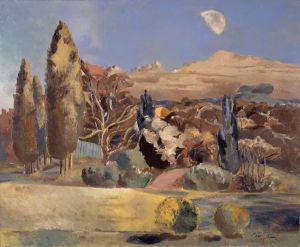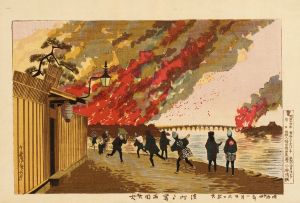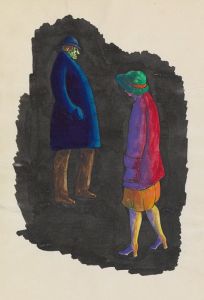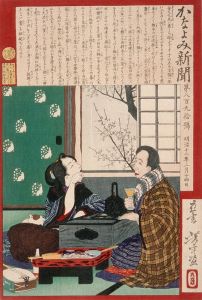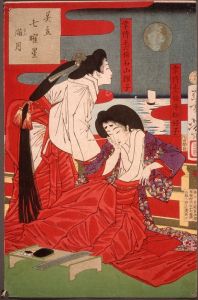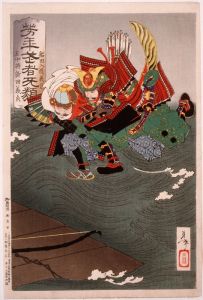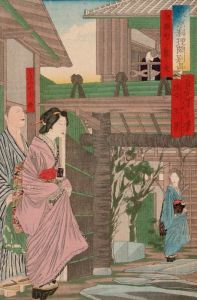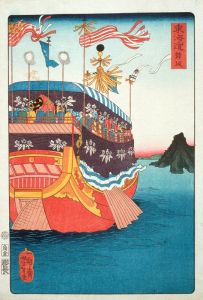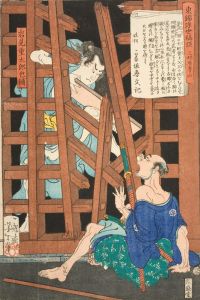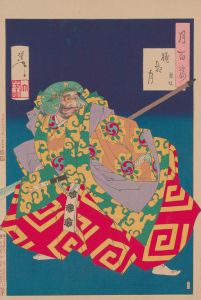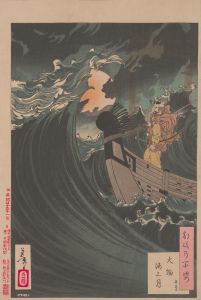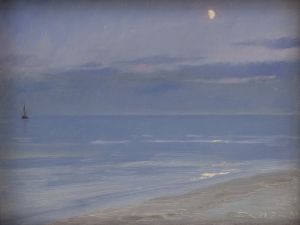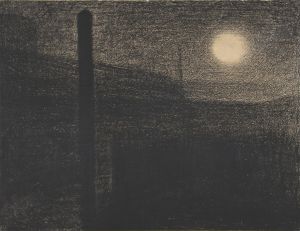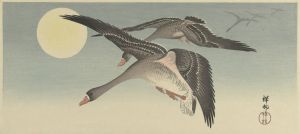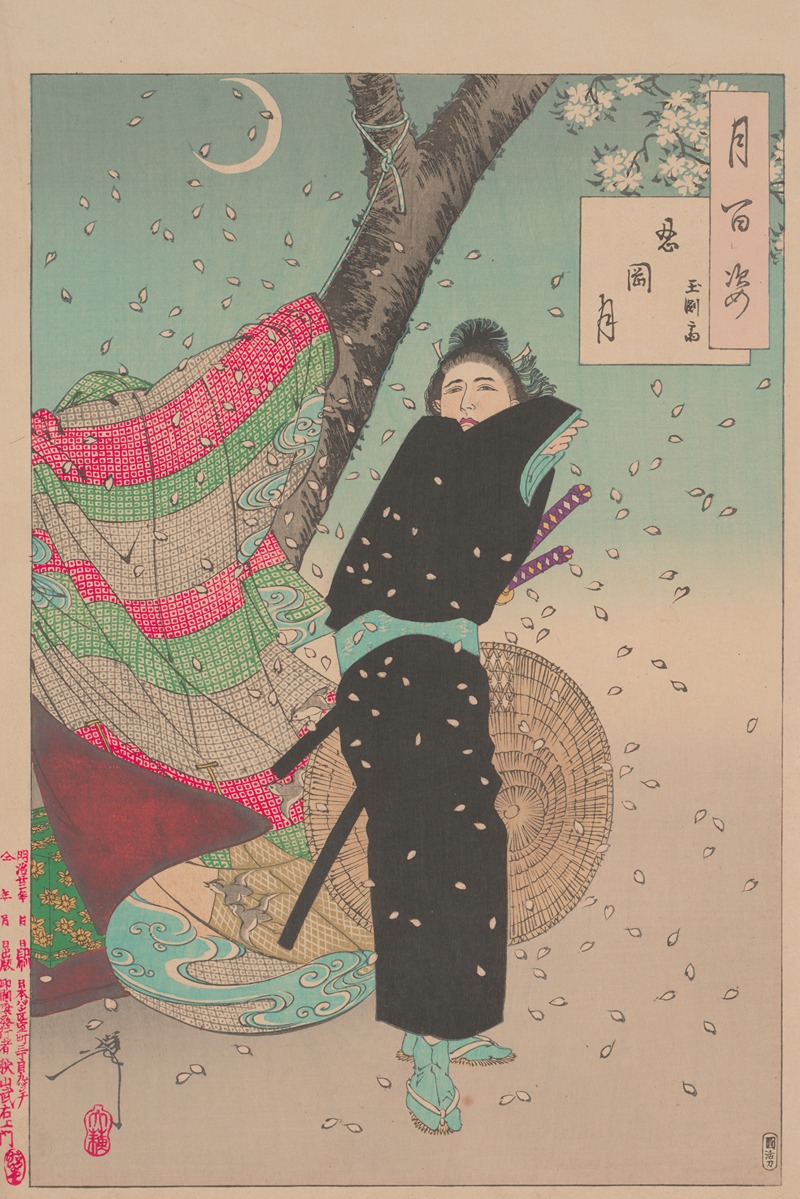
Shinobugaoka moon
A hand-painted replica of Tsukioka Yoshitoshi’s masterpiece Shinobugaoka moon, meticulously crafted by professional artists to capture the true essence of the original. Each piece is created with museum-quality canvas and rare mineral pigments, carefully painted by experienced artists with delicate brushstrokes and rich, layered colors to perfectly recreate the texture of the original artwork. Unlike machine-printed reproductions, this hand-painted version brings the painting to life, infused with the artist’s emotions and skill in every stroke. Whether for personal collection or home decoration, it instantly elevates the artistic atmosphere of any space.
"Shinobugaoka Moon" is a woodblock print created by the renowned Japanese artist Tsukioka Yoshitoshi (1839–1892), one of the last great masters of the ukiyo-e tradition. This artwork is part of Yoshitoshi's celebrated series titled "One Hundred Aspects of the Moon" (Tsuki hyakushi), which was published between 1885 and 1892. The series consists of 100 individual prints, each exploring themes related to the moon, often drawing inspiration from Japanese history, literature, folklore, and theater.
"Shinobugaoka Moon" depicts a serene and contemplative scene featuring a historical or literary figure under the moonlight at Shinobugaoka, a location in Edo (modern-day Tokyo) known for its scenic beauty. The composition reflects Yoshitoshi's mastery of combining natural elements with human emotion, a hallmark of his later works. The moon, a central motif in the series, symbolizes not only the passage of time but also the transient nature of life, a theme deeply rooted in Japanese aesthetics.
Yoshitoshi's "One Hundred Aspects of the Moon" series is widely regarded as a culmination of his artistic career. It showcases his innovative use of color, line, and composition, as well as his ability to convey complex narratives within a single image. The series was produced during a period of significant cultural and social change in Japan, as the country transitioned from the Edo period to the Meiji era. Yoshitoshi's work reflects both a reverence for traditional Japanese art and an awareness of the modernization occurring around him.
The exact historical or literary reference for "Shinobugaoka Moon" is not definitively documented, as Yoshitoshi often drew from a wide range of sources. However, the print's evocative imagery and poetic atmosphere have made it a notable example of his ability to blend storytelling with visual art.
Today, "Shinobugaoka Moon" and the other prints in the "One Hundred Aspects of the Moon" series are celebrated for their artistic and cultural significance. They are held in high regard by collectors and scholars of Japanese art and can be found in museum collections and private holdings worldwide.





